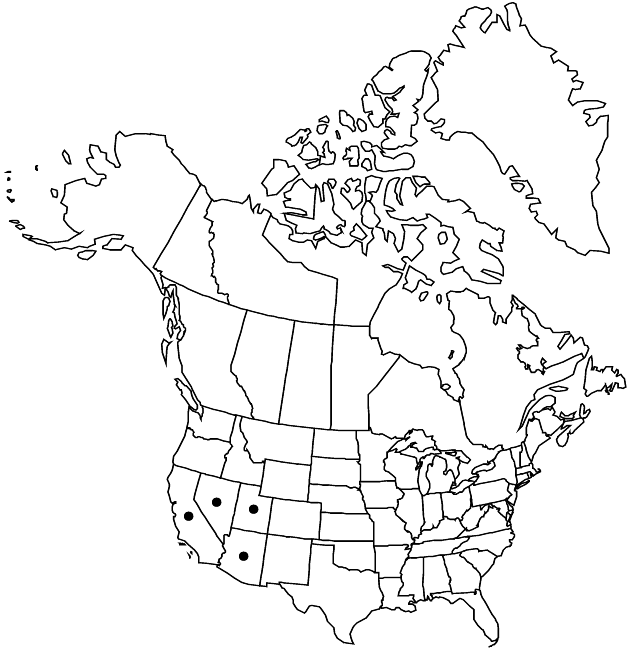Difference between revisions of "Monoptilon bellidiforme"
Boston J. Nat. Hist. 5: 106, plate 13, figs. 1–6. 1845.
Common names: Daisy desertstar
IllustratedEndemic
Treatment appears in FNA Volume 20. Treatment on page 210.
imported>Volume Importer |
imported>Volume Importer |
||
| Line 53: | Line 53: | ||
|publication year=1845 | |publication year=1845 | ||
|special status=Illustrated;Endemic | |special status=Illustrated;Endemic | ||
| − | |source xml=https:// | + | |source xml=https://bitbucket.org/aafc-mbb/fna-data-curation/src/2e0870ddd59836b60bcf96646a41e87ea5a5943a/coarse_grained_fna_xml/V19-20-21/V20_469.xml |
|tribe=Asteraceae tribe Astereae | |tribe=Asteraceae tribe Astereae | ||
|genus=Monoptilon | |genus=Monoptilon | ||
Latest revision as of 21:03, 5 November 2020
Stems yellow-green. Phyllary margins herbaceous. Disc floret corollas loosely strigose proximally. Pappi scarious cups 0.1–0.4 mm plus 1 apically plumose bristle usually equaling disc corollas, rarely the bristle reduced or almost absent. 2n = 16.
Phenology: Flowering Mar–May.
Habitat: Sandy or gravelly flats, pinyon pine or pine-juniper woodlands
Elevation: 700–1500 m
Distribution

Ariz., Calif., Nev., Utah.
Discussion
Selected References
None.
Lower Taxa
None.
